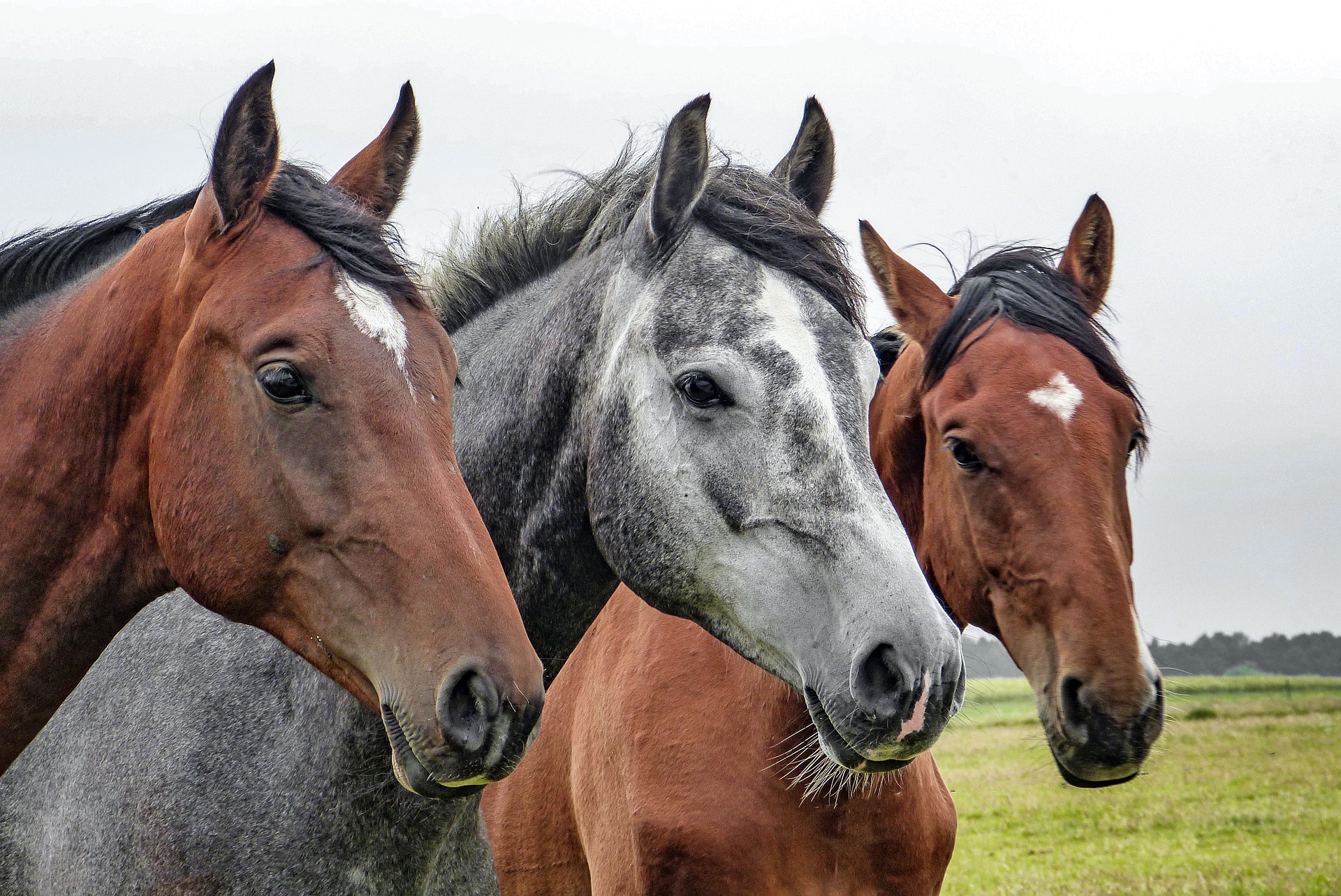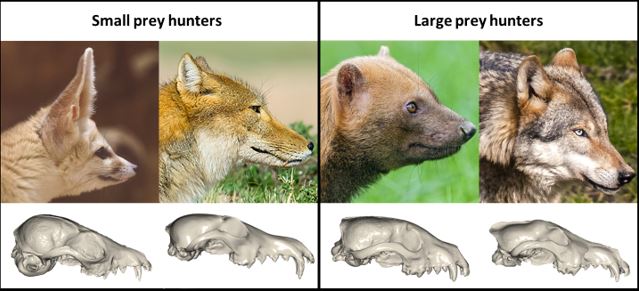
Horses have developed long faces simply ‘because they can,’ a team of evolutionary biologists say.
In a major review of how mammalian heads evolve, scientists from Flinders University and The University of Adelaide found that adaptations to feeding explain why large species of mammals often have much longer faces compared to smaller closely related species – a pattern referred to as Craniofacial Evolutionary Allometry (CREA).

Study leader Dr Rex Mitchell, from Flinders University, says: “The CREA pattern is seen across lots of different mammals that otherwise have little in common – from cats to mice, from antelopes to baboons, from deer to kangaroos. However, so far, scientists have not been able to explain what causes it.”
Senior author Associate Professor Vera Weisbecker, also from the College of Science and Engineering at Flinders University, adds: “Confusingly, there are also many mammals where the rule does not hold up or is even reversed.
“Australian carnivorous marsupials are a great example. We found that their largest living member, the Tasmanian devil, has an exceptionally short face compared to other species.”
Co-author Dr Emma Sherratt, from The University of Adelaide, says that the team went back to basic ‘lever mechanics’ to explain both the rule of the long face and its exceptions.
“Closely related mammals tend to eat similar foods. For example, different kangaroos species all eat grass or leaves and different species of wolves and foxes all eat meat. However, bigger animals of a group have a naturally stronger bite because their skull, teeth and jaw muscles are simply bigger.”
This means that smaller mammals need stronger bites to chew the same food as larger relatives. For this, shorter faces are advantageous because they can impart more bite force.
“When you grab barbecue tongs closer to their tips for a stronger grip, you are shortening the distance between the ‘biting’ end of the tongs and the squeeze of your hands. For exactly this reason, shorter faces also have stronger bites,” explains Dr Mitchell.
“On the flip side, the naturally stronger bite that comes with being bigger means that large mammals do not need a short face to feed successfully,” he says.
Instead, larger species’ skulls can adapt when longer faces are an advantage. For example, long-snouted kangaroos or deer can reach further into trees and hold bigger mouthfuls of food. Longer jaws can close faster and allow predators like foxes and jackals to snatch small prey more easily.
Because of this, the team argue, large mammals such as horses have long faces just ‘because they can’.
But what about those glaring exceptions?

“Our analyses of 22 mammal families show that there is almost always a radical change in diet when smaller mammals have longer faces than their larger relatives,” adds Associate Professor Weisbecker.
“For example, Tasmanian devils are known to crush bones, and the short-snouted orcas feed on much larger prey than their fish-eating dolphin relatives. These behaviours need higher bite forces.

Images: Fennec fox (Rawpixel), Tibetan fox (Craig Brelsford), bush dog (Flickr: Tambako), wolf (PickPik).
“But this also works the other way around. For example, the tiny honey possum has a much longer snout than would be expected for any possum, but it also mostly licks nectar from deep inside flowers and does not need to bite hard.”
All three team members agree that humans are probably an exception among exceptions.

“Humans do not use their snouts as a primary means of obtaining food. They use their hands and tools to manipulate can soften their food through cooking,” Dr Mitchel says.
“This means that the evolution of the human face is probably more influenced by other things than their ability to bite.”
All three Adelaide scientists will attend this week’s Australasian Evolution Conference
The article, Facing the facts: adaptive trade-offs along body size ranges determine mammalian craniofacial scaling (2023) by D Rex Mitchell, Emma Sherratt and Vera Weisbecker has been published in Biological Reviews, (John Wiley & Sons) for the Cambridge Philosophical Society DOI: 10.1111/brv.13032.
Acknowledgements: This work was funded by the Australian Research Council Future Fellowships (Weisbecker & Sherratt) and the ARC Centre of Excellence for Australian Biodiversity and Heritage (CABAH).
Read more in The Conversation (link here)

